Science
Can a Water Flosser Prevent Gum Diseases?

Gum diseases like periodontitis are more prevalent these days when people systematically forget about their dental hygiene. Even though the new electric toothbrushes and the flossing machines are more affordable than ever, there is a chance that bacteria can multiply in your oral tissues and create gum diseases.
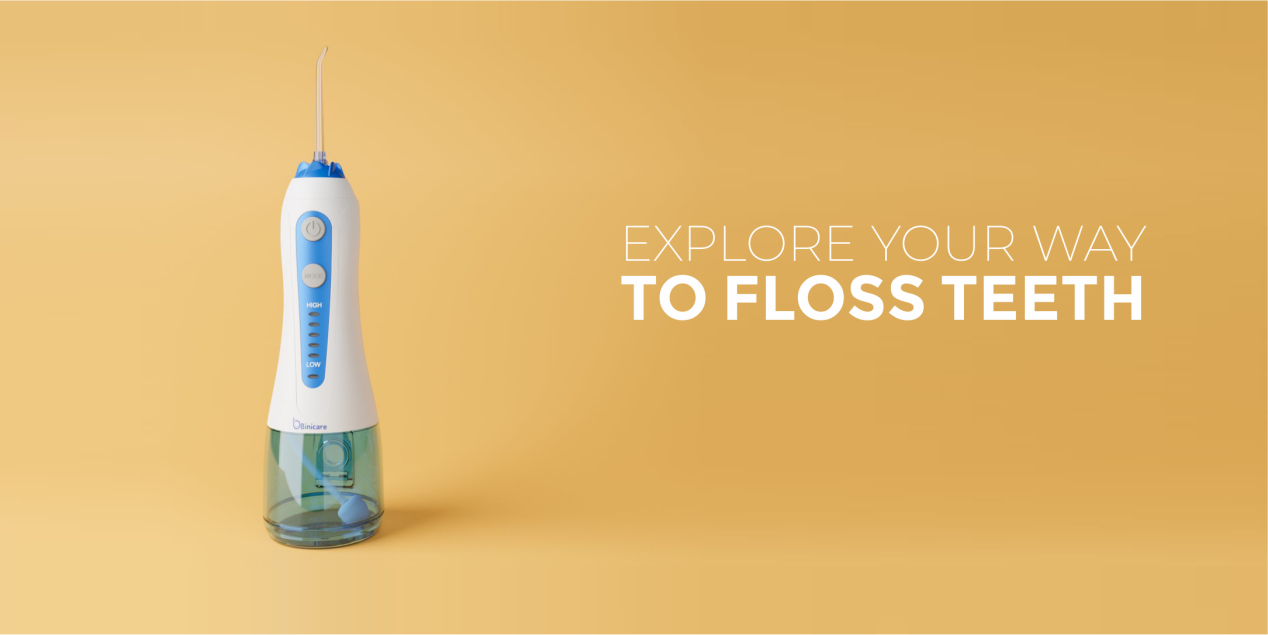
You can be free of all that hassle with gum diseases when you use the portable water flosser device more than once per day. It’s the only device that can give you a food debris-free oral cavity and ensure that you will not lose your precious teeth because of the immense decay that takes place within your gums.
Let’s see how the water flosser function can easily diminish the danger of having periodontitis and other gum diseases that pose a real threat to your overall health and contribute to your bad oral smell.
It Enhances the Microcirculation in Your Gums
When you apply the water pressure from the flosser on your gums you can feel a light tickling. That is created since you stimulate the microcirculation of the blood in your oral tissues and your gums in particular. It’s the most impressive outcome of the water flossing and can regenerate all the tissues there.
That can give you better oral hygiene and ensure that your teeth have roots on a healthier environment and the gums are not susceptible to any other periodontal disease that could pose a serious threat to your health.
The micro-circulation is necessary to ensure that you have healthy gums and teeth especially when you are a heavy smoker. That can give you the chance to get a higher blood stream to your gums and ensure that you will always be healthy and with the best smile in the world to seduce others when you pass by.
Water Pressure Removes Germs from Gums
Another impressive effect of the water flosser that makes your gums become free of any disease would be the removal of germs and bacteria. It’s true that your gums get filled with plaque and tartar when you eat a lot during meals.
This doesn’t mean you are not allowed to eat as much food as you like, but it will not have the same effect on your gums after you apply some gentle water pressure to remove plaque from teeth and clean up food debris in your mouth. That water pressure can get adjusted to become higher in the difficult and hidden spots.
On the other hand, you will have fewer possibilities for an oral infection since you will always remove the germs from your mouth and place them in the safe place of your stomach, where the acids can dissociate them into pieces and molecules.
The Water Flosser Creates More Humid Conditions in Your Mouth
Some people suffer from gum diseases simply because they lack normal saliva production. These people can have a bit better luck with the use of the portable water flosser on a daily basis. The water pressure gives a lot of moisture to your mouth.
For that reason, there is no hope for any germ or bacteria to develop; that’s why you cannot pretend that nothing happens when you don’t use the water flosser which is easy to apply and can save your dental tissues from gum diseases and other issues that may cost you several painful visits to the dentist’s office.
A water flosser solution is all you need to ensure that you will have your saliva production turned back to normal and give people all they need to feel their mouths more humid and moist than at any other time in the past. After all, it’s the moisture that washes the germs away and leaves all the surfaces free from any contaminating agent.
You Can Spread Some Antibiotic Fluid Within the Water Flosser Tank
Many dentists could prescribe you an antibiotic fluid to ensure that the water flosser could help you the most to treat gum disease.
If you believe that there is no other way you can treat your gums than getting the antibiotic in your water tank, then you better do that.
People who have issues with periodontitis are the first candidates for getting a portable water flosser that can spread some antibiotics on the plaque and ensure that even the minimal bleeding when you brush your teeth will not affect your oral health.
With the water flosser, you may also expect to fix your bad breath issue and reinforce the gum tissues for many years to come.
A Water Flosser May Also Remove Plaque Effectively
Forget about the older ways your dentist used to employ to have your plaque removed from your interdental spaces. Today there is no reason to undergo a surgical scratching of your teeth’ surface just to remove the plaque accumulated there.
With the handhold water flosser, you can easily remove the plaque using some focused power and ensure that plaque removal will remain there, keeping your gums clean for a long time.
After all, when you apply water flossing several times during the day, you make it easier to remove plaque and tartar since you don’t give germs much time to gather, create colonies, and then attack your healthy gums tissues.
Periodontitis Is a Gum Disease You Can Control With Water Pressure
Finally, you need to know that the most prevalent gum disease in the world remains periodontitis. It’s very potent among heavy smokers who deteriorate their condition when they smoke directly on the gums and create an environment where there is a lack of oxygen and moisture.
Using the water pressure coming from the best water flosser you can easily remove any debris and make your gums shine again. It’s the best thing that can happen to you when you are a regular eater and would need some assistance with cleaning and taking care of your oral tissues.
Water pressure can get fixed to the right level and you will restore the gums’ health in less than a week when using that remedy.
Related CTN News:
New Dinosaur Species Having Knives For Claws Discovered In Japan’s Hokkaido
After Tesla, Now Elon Musk’s SpaceX To Accept Dogecoin For Merchandise Soon
TWELVE NORSE MYTHOLOGICAL WEAPONS

Science
NASA Switches Off Instrument On Voyager 2 Spacecraft To Save Power
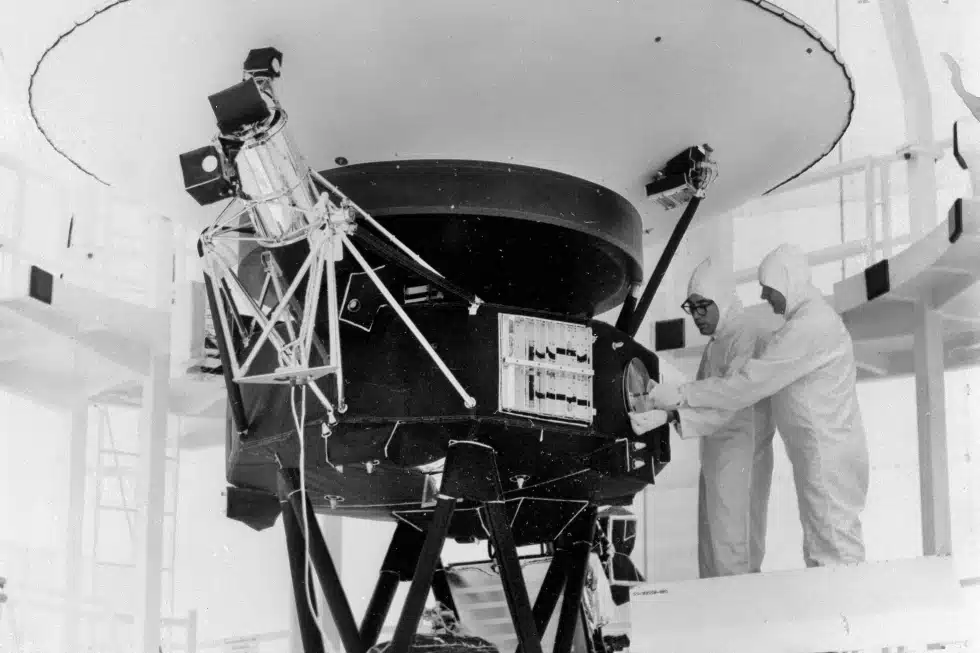
NEW YORK — To save power, NASA turned off another scientific equipment on its long-running Voyager 2 spacecraft.
NASA Switches Off Instrument On the Spacecraft To Save Power
The space agency announced on Tuesday that 2’s plasma science instrument, meant to study the movement of charged atoms, was turned off in late September to allow the spacecraft to continue exploring for as long as possible, which is estimated to be into the 2030s.
NASA turned off a suite of instruments on Voyager 2 and its twin, Voyager 1, after exploring the gas giant planets in the 1980s. Both are currently in interstellar space or the region between stars. The plasma instrument on Voyager 1 stopped working years ago and was finally shut off in 2007.
The remaining four instruments on 2 will continue to collect data on magnetic fields and particles. Its mission is to investigate the regions of space beyond the sun’s protective sphere.
NASA Switches Off Instrument On Voyager 2 Spacecraft To Save Power
It launched in 1977, is the only spacecraft to have visited Uranus and Neptune. It is now more than 12 billion miles (19.31 billion kilometers) from Earth. 1 is more than 15 billion miles (24.14 billion kilometers) beyond Earth.
SOURCE | AP
Science
Hurricane Kirk Could Cause Dangerous Surf Conditions Along The US East Coast
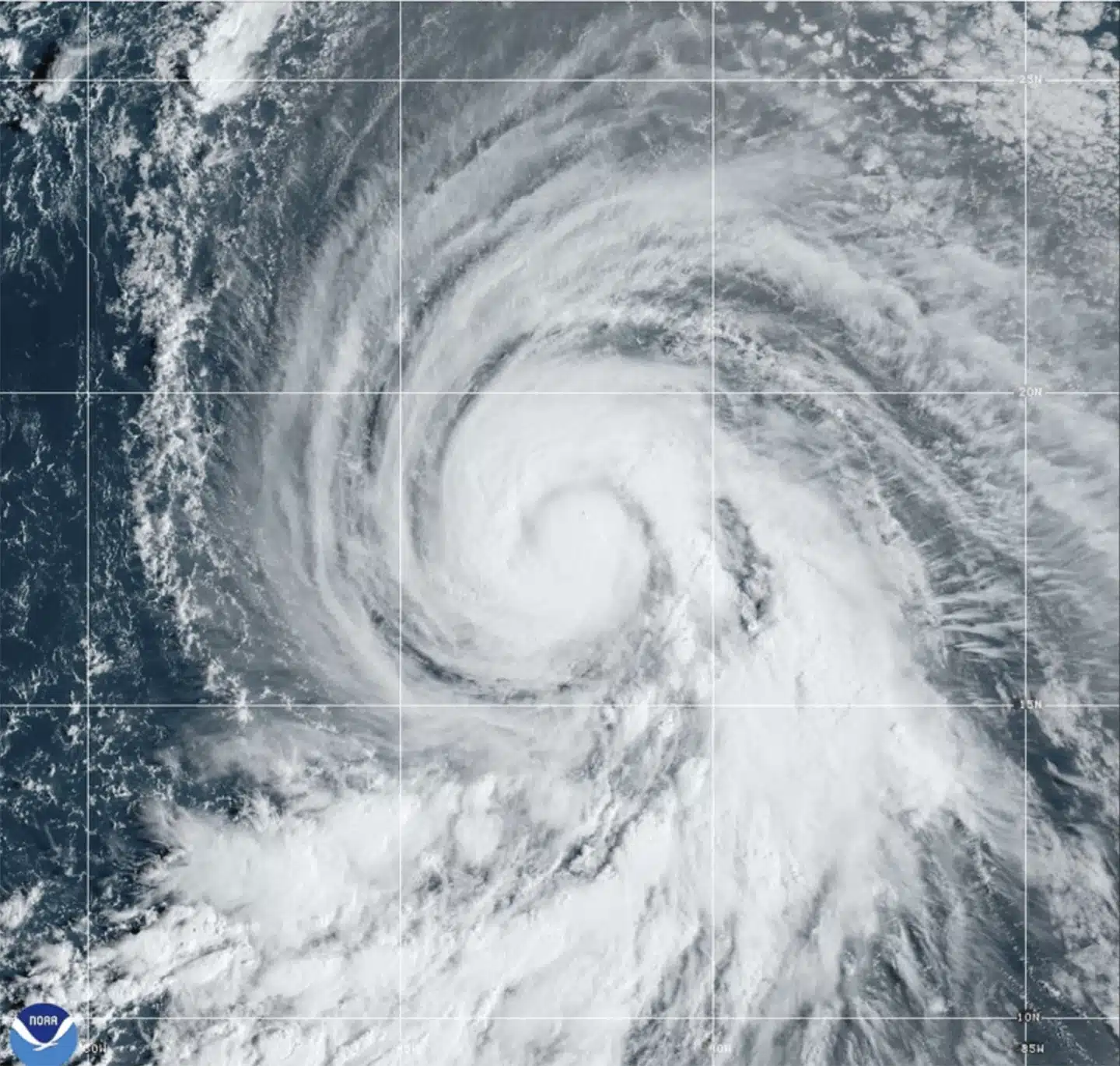
MIAMI — Hurricane Kirk’s waves could generate life-threatening surf and rip current conditions this weekend throughout the United States East Coast, as well as in Bermuda, the Greater Antilles, and the Bahamas, according to forecasters.
Kirk was a Category 3 hurricane in the middle Atlantic Ocean that might grow further but was predicted to stay away from land, according to the Miami-based National Hurricane Center on Thursday.
Hurricane Kirk Could Cause Dangerous Surf Conditions Along The US East Coast
Kirk-generated swells were forecast to reach parts of the Leeward Islands on Friday, Bermuda and the Greater Antilles on Saturday, and the East Coast and the Bahamas on Sunday, according to the center.
No coastal watches or warnings were in effect. The major storm was around 1,130 miles (1,820 kilometers) east of the Leeward Islands, with maximum sustained winds of 125 mph (205 km/h).
Meanwhile, Tropical Storm Leslie formed late Wednesday in the eastern Atlantic and is expected to strengthen into a hurricane in the following days, forecasters said. It was also not considered a threat to the land.
Hurricane Kirk Could Cause Dangerous Surf Conditions Along The US East Coast
The storm was about 540 miles (870 kilometers) southwest of Cabo Verde’s southernmost tip, with maximum sustained winds of 45 mph (75 kph), according to the center.
The storms raged in the Atlantic as rescuers in the United States Southeast sought for missing persons after Hurricane Helene struck last week, leaving a trail of death and devastation.
SOURCE | AP
Science
NASA Sends First Manned Starliner Spacecraft to Space Station
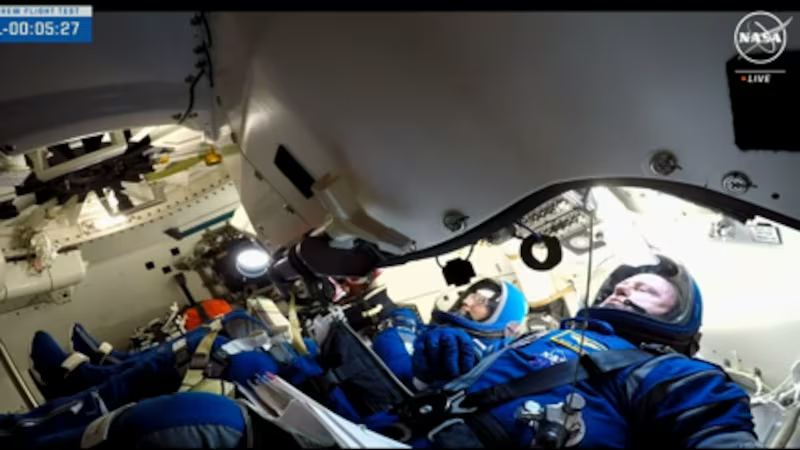
NASA has announced astronauts Butch Wilmore and Suni Williams are safely in orbit on the first crewed flight test of Boeing’s Starliner spacecraft heading for the International Space Station.
As part of NASA’s Boeing Crew Flight Test, the astronauts launched a ULA (United Launch Alliance) Atlas V rocket from Space Launch Complex-41 at Cape Canaveral Space Force Station in Florida at 10:52 a.m. EDT Wednesday for an end-to-end test of the Starliner system.
“Two brave NASA astronauts are well on their way to this historic first test flight of a brand-new spacecraft,” stated NASA Administrator Bill Nelson. “Boeing’s Starliner represents a new era of American exploration. Human spaceflight is a risky endeavor, but it is worth it. It is an exciting time for NASA, our commercial partners, and the future of space exploration. “Go Starliner, Butch, and Suni!”
The flight test is part of NASA’s Commercial Crew Program and will help validate the transportation system, launch pad, rocket, spacecraft, in-orbit operations capabilities, and return to Earth with astronauts aboard as the agency prepares to certify Starliner for rotational missions to the space station. Starliner has already completed two uncrewed orbital missions, including a test to and from the space station, as well as a pad abort demonstration.
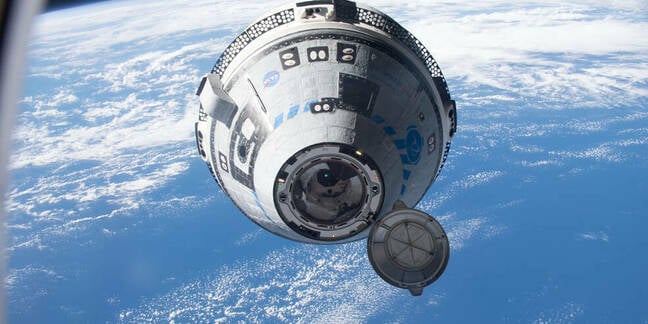
Boeing Starliner Makes Orbit
“With Starliner’s launch, separation from the rocket, and arrival in orbit, Boeing’s Crew Flight Test is right on track,” said Mark Nappi, vice president and program manager for Boeing’s Commercial Crew Program. “Everyone is focused on giving Suni and Butch a safe, comfortable, ride and performing a successful test mission from start to finish.”
Boeing’s mission control center in Houston will supervise a sequence of autonomous spacecraft maneuvers while Starliner is in flight. NASA teams will supervise space station activities from the Mission Control Center at the agency’s Johnson Space Center in Houston.
“Flying crew on Starliner represents over a decade of work by the Commercial Crew Program and our partners at Boeing and ULA,” said Steve Stich, Commercial Crew Program Manager at NASA’s Johnson Space Center in Houston. “For many of us, this is a career-defining occasion, ushering in a new crew transportation capacity for our agency and our country. We will take it one step at a time, putting Starliner through its paces and remaining watchful until Butch and Suni safely land back on Earth at the end of this test journey.”
At about 12:15 p.m., Starliner will dock autonomously to the forward-facing port of the station’s Harmony module. Thursday, June 6, and will remain at the orbital laboratory for almost a week.
Wilmore and Williams will help ensure that the spacecraft is functioning properly by testing the environmental control system, the displays and control system, and moving the thrusters, among other things, during flight.
Wilmore and Williams will join the Expedition 71 crew, which includes NASA astronauts Michael Barratt, Matt Dominick, Tracy C. Dyson, and Jeanette Epps, as well as Roscosmos cosmonauts Nikolai Chub, Alexander Grebenkin, and Oleg Kononenko.
NASA’s arrival and in-flight event coverage is as follows (all times Eastern and subject to change depending on real-time operations):
NASA Television channels will continue to broadcast the Starliner’s mission.
Thursday, June 6
9:30 a.m. – Arrival coverage begins on NASA+, the NASA app, and YouTube, and continues on NASA Television and the agency’s website.
12:15 p.m. – Targeted docking
2 p.m. – Hatch opening
2:20 p.m. – Welcome remarks
3:30 p.m. – Post-docking news conference at NASA Johnson with the following participants:
- NASA Associate Administrator Jim Free
- Steve Stich, manager, NASA’s Commercial Crew Program
- Jeff Arend, manager for systems engineering and integration, NASA’s International Space Station Office
- Mark Nappi, vice president and program manager, Commercial Crew Program, Boeing
Coverage of the post-docking news conference will air live on NASA+, NASA Television, the NASA app, YouTube, and the agency’s website.
To attend the post-docking briefing, U.S. media must contact the NASA Johnson newsroom at: [email protected] or 281-483-5111 by 1 p.m. Thursday, June 6. To join by phone, media must contact the NASA Johnson newsroom by 3 p.m. Thursday, June 6.
5:50 p.m. – NASA Administrator Bill Nelson, Deputy Administrator Pam Melroy, Associate Administrator Jim Free, Associate Administrator for Space Operations Ken Bowersox, and Johnson Space Center Director Vanessa Wyche will speak with Wilmore and Williams about their launch aboard the Starliner spacecraft.
Coverage of the Earth to space call will air live on NASA+, NASA Television, the NASA app, YouTube, and the agency’s website.
Saturday, June 8
8:50 a.m. – NASA astronauts Wilmore and Williams will provide a tour of Starliner.
Coverage of the in-orbit event will stream live on NASA+, NASA Television, the NASA app, YouTube, and the agency’s website.
Monday, June 10
11 a.m. – Williams will speak to students from Sunita L. Williams Elementary School in Needham, Massachusetts, in an event aboard the space station.
Coverage of the Earth to space call will air live on NASA+, NASA Television, the NASA app, YouTube, and the agency’s website.
Tuesday, June 11
3:15 p.m. – Wilmore will speak to students from Tennessee Tech University in an event aboard the space station.
Coverage of the Earth to space call will air live on NASA+, NASA Television, the NASA app, YouTube, and the agency’s website.
-

 News3 years ago
News3 years agoLet’s Know About Ultra High Net Worth Individual
-
Entertainment2 years ago
Mabelle Prior: The Voice of Hope, Resilience, and Diversity Inspiring Generations
-

 Health3 years ago
Health3 years agoHow Much Ivermectin Should You Take?
-

 Tech2 years ago
Tech2 years agoTop Forex Brokers of 2023: Reviews and Analysis for Successful Trading
-

 Lifestyles3 years ago
Lifestyles3 years agoAries Soulmate Signs
-

 Movies2 years ago
Movies2 years agoWhat Should I Do If Disney Plus Keeps Logging Me Out of TV?
-

 Health3 years ago
Health3 years agoCan I Buy Ivermectin Without A Prescription in the USA?
-

 Learning3 years ago
Learning3 years agoVirtual Numbers: What Are They For?
